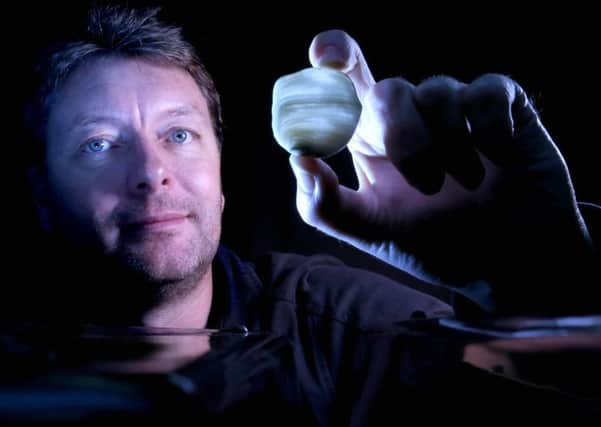Cave’s stalagmites reveal secrets of war, invasions and climate change


Scientists who examined five stalagmites in Roaring Cave, north of Ullapool, were the first to use a compilation of cave measurements to track changes in a climate phenomenon called the North Atlantic Oscillation.
The North Atlantic Oscillation climate index measures the air pressure difference between Iceland and the Azores islands off the Portuguese coast, and is a record of the strength of the westerly winds in the North Atlantic.
Advertisement
Hide AdAdvertisement
Hide AdRoaring Cave, or Uamh an Tartair, is a shallow cave beneath a blanket of peat which has accumulated during the past 4,000 years.
Rainfall levels in this region closely correspond with the strength of the oscillation index in winter, with higher precipitation when it is positive.
The upward rate of growth of stalagmites in the cave is very sensitive to rainfall – the more water in the peat, the more slowly the stalagmites grow.
Researchers measured the thickness of each annual growth ring in five limestone stalagmites taken from the cave, including one providing a continuous annual record spanning more than 1,800 years.
By overlapping the five stalagmites, they obtained a proxy record of the climate at the cave during a 3,000-year period from about 1,000BC to 2,000AD.
Professor Andy Baker, from the University of New South Wales in Australia, who led the study, said: “Our results provide the longest annual record of this important phenomenon, which has a big impact on the climate in Europe,
“It confirms that the during the ‘Medieval Warm Period’ between 1080 and 1430, the oscillation index was in an unusually prolonged positive phase, which brings increased rain to Scotland and drier conditions in the western Mediterranean.
“Our results also reveal there was another persistent positive phase between 290 and 550, which coincides with the decline of Rome and a period of intensified human migration in southern Europe during the Dark Ages.
Advertisement
Hide AdAdvertisement
Hide Ad“This was followed by a persistent negative phase between 600 and 900 which may have provided warm and dry conditions in north-western Europe that made it suitable for westward expansion by the Vikings, although the precise timing of this event is contested.”
Prof Baker, whose study is published in the journal Scientific Reports, added: “Our research provides a climate context for some of the big human migration events in Europe and allows us to start building hypotheses about the impact of environment on societal change.”
The team also included researchers from the University of Lausanne in Switzerland and the University of Arizona in the United States.
Ishbel Florence, owner of the Harbour Lights bed and breakfast in Ullapool, said that discovery would help attract more visitors to the area.
“Quite a lot of geologists come up to this area but I think this will certainly bring more visitors and it’ll certainly boost local businesses and guesthouses,” said Ms Florence.